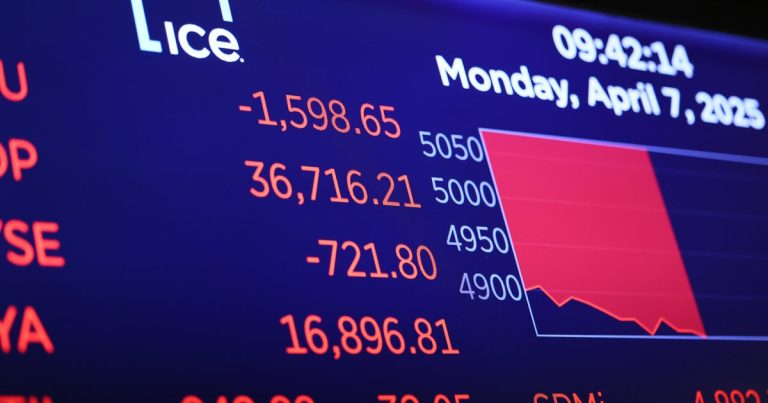Trump’s Trade War Fuels Market Volatility, Exacerbated by Social Media Chaos
The global stock market experienced a rollercoaster ride on Monday, reflecting the widespread anxieties stemming from President Donald Trump’s escalating trade war. The already tense situation was further amplified by a false social media post that briefly ignited a market rally before plunging it back into uncertainty. The incident served as a stark reminder of the fragility of the global economy under the weight of protectionist policies and the outsized influence of social media in the modern information landscape.
The market’s initial tumble reflected growing concerns about the potential economic fallout from Trump’s "Liberation Day" announcement, where he imposed sweeping tariffs on numerous countries. Investor confidence continued to erode as the White House doubled down on its aggressive trade stance, seemingly oblivious to the potential for global economic damage. The market’s dramatic reversal mid-morning was triggered by a now-deleted post from an X (formerly Twitter) user claiming that the White House was considering a 90-day tariff pause. This unverified information, originating from an account bearing the name "Walter Bloomberg" and sporting a paid verification badge, quickly spread, creating a ripple effect through the financial world.
The market’s euphoric response to the rumor, however fleeting, underscored the desperate yearning for stability amid the trade war turmoil. The subsequent revelation that the post was false, confirmed by a White House statement denouncing it as "fake news," sent the market plummeting once again. This dramatic swing highlighted the vulnerability of the market to misinformation and the precariousness of investor sentiment in an environment dominated by unpredictable policy pronouncements and amplified by the rapid dissemination of unverified information on social media platforms.
The incident involving the erroneous X post brought into sharp focus the potentially destabilizing influence of social media on global financial markets. The user’s paid verification badge, a feature introduced by X owner Elon Musk, lent an air of credibility to the false claim. This incident raises serious questions about the efficacy and potential unintended consequences of social media verification systems, particularly in the context of highly sensitive information that can impact global markets. The episode underscores the need for greater vigilance and critical evaluation of information circulating online, especially during periods of heightened market volatility.
The chaotic trading day served as a microcosm of the broader economic anxieties generated by Trump’s trade policies. Economists have warned of the potential for a recession, driven by the retaliatory tariffs imposed by other countries and the resulting disruption of global trade flows. Consumers are also bracing for the impact of higher prices on everyday goods, as tariffs increase the cost of imported products. The compounding effect of social media-driven misinformation further exacerbates the economic uncertainties, creating a climate of fear and instability.
President Trump’s apparent disregard for the market’s volatility and his continued saber-rattling on social media only add fuel to the fire. His post on Truth Social, threatening China with additional tariffs, further destabilizes the situation and undermines any hope for a de-escalation of the trade war. This continued aggressive posture raises concerns about the long-term economic consequences of his protectionist policies and the potential for further market disruptions fueled by social media misinformation. The incident highlights the pressing need for responsible communication and fact-checking in the digital age, especially when dealing with sensitive information that can have profound real-world consequences.


